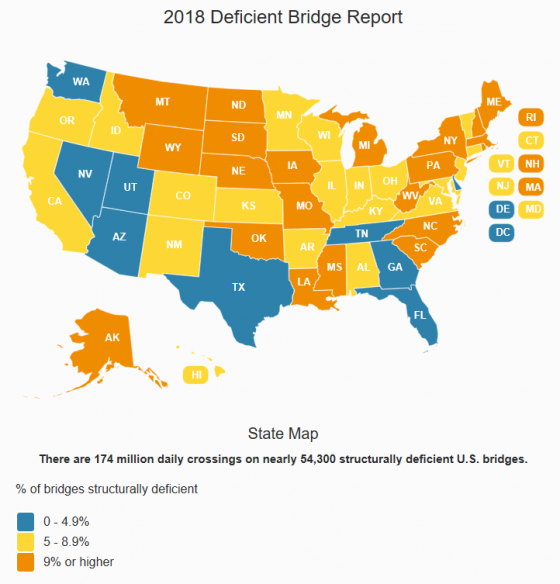 More than 54,000 bridges along the Interstate Highway System in the United States were rated as “structurally deficient,” according to new analysis conducted by the American Road & Transportation Builders Association’s (ARTBA). This was just one of many of the concerning statistics detailed by ARTBA in its 2018 Deficient Bridge Report on Jan. 29.
More than 54,000 bridges along the Interstate Highway System in the United States were rated as “structurally deficient,” according to new analysis conducted by the American Road & Transportation Builders Association’s (ARTBA). This was just one of many of the concerning statistics detailed by ARTBA in its 2018 Deficient Bridge Report on Jan. 29.
Other critical details include:
- The average age of a structurally deficient bridge is 67 years, compared to 40 years for non-deficient bridges.
- Repair needs are identified among one in three U.S. bridges (226,837 total) and one in three bridges (17,726) along the Interstate Highway System (IHS).
- There is the equivalent of one “structurally deficient” bridge for every 27 miles of the 48,000-mile IHS, which carries 75% of the nation’s heavy truck traffic.
The ARTBA report echoes the results of the American Society of Civil Engineers’ Report Card for 2017, wherein the U.S. received a performance of D+ based on the physical condition and needed investments for improvement. As reported by Risk Management magazine in 2017, the U.S. spends only 2.5% of its gross domestic product on infrastructure. The American Society of Civil Engineers estimated that, over the next 10 years, the gap between planned investments in infrastructure and investment needs could exceed $2.1 trillion, with the largest investment gap in the transportation sector, followed by schools, electric utilities and water/wastewater systems.
With Americans crossing these deficient bridges 174 million times daily, there is reason for concern among private citizens and companies. At the current pace of repair or replacement, it would take 37 years to remedy all of them, said Alison Premo Black, PhD, ARTBA chief economist, who conducted ARTBA’s analysis.
“An infrastructure package aimed at modernizing the Interstate System would have both short- and long-term positive effects on the U.S. economy,” she said, noting that traffic bottlenecks cost the trucking industry more than $60 billion per year in lost productivity and fuel.
The report was issued just ahead of President Trump’s first State of the Union address on Jan. 30, in which he identified a struggling infrastructure and requested legislation aimed at capital improvements:
Tonight, I am calling on the Congress to produce a bill that generates at least $1.5 trillion for the new infrastructure investment we need. Every federal dollar should be leveraged by partnering with state and local governments and, where appropriate, tapping into private sector investment—to permanently fix the infrastructure deficit.
Any bill must also streamline the permitting and approval process—getting it down to no more than two years, and perhaps even one.
National Public Radio reported that the White House initially called for a $1 trillion rebuilding plan but raised the stakes during the address, and specifically called out certain phrasing.
“That word ‘generates’ is important,” wrote NPR contributors in an analysis of the speech, “because this would not mean the U.S. government is spending $1 trillion.” President Trump has allocated $200 billion in federal spending on infrastructure. “The bulk of the $200 billion would go toward leveraging state and local money and private investment,” NPR’s David Schaper reported.

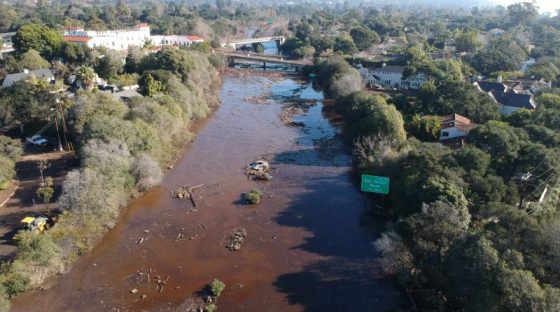
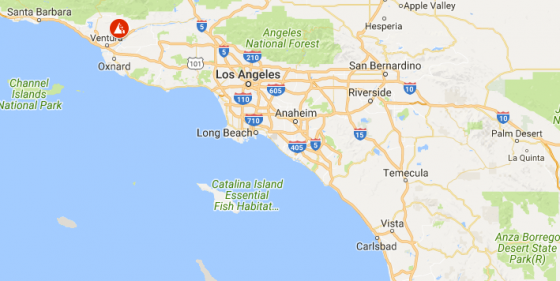 Many of those who had returned home after the wildfires have been evacuated for mudslides. The
Many of those who had returned home after the wildfires have been evacuated for mudslides. The 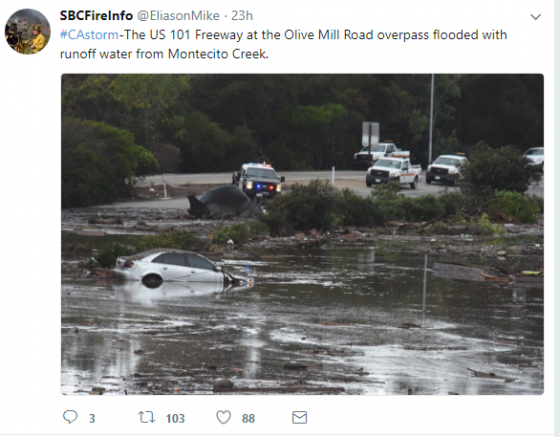 Driving rain started at about 3:00 a.m. on Jan. 9. By Tuesday,
Driving rain started at about 3:00 a.m. on Jan. 9. By Tuesday,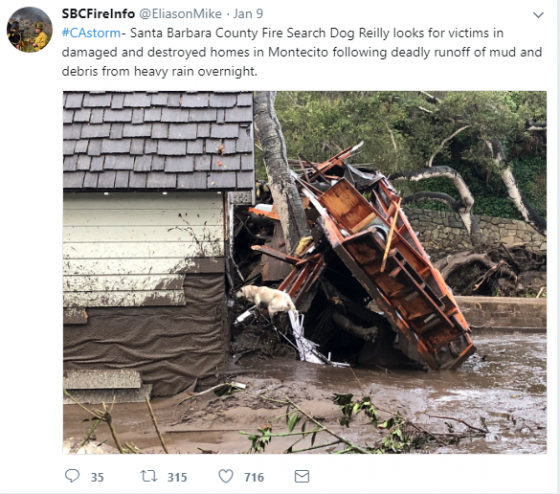
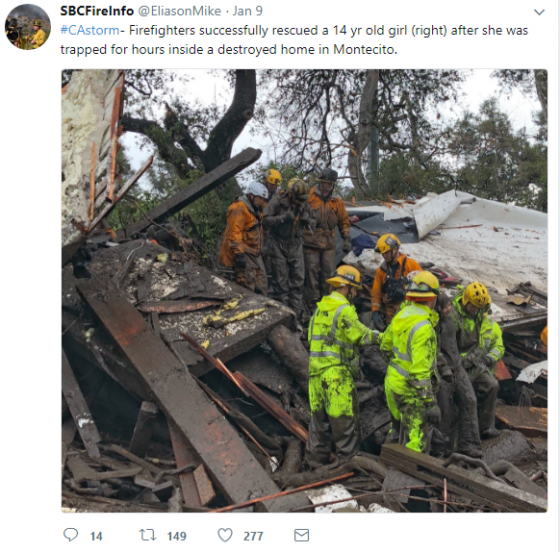
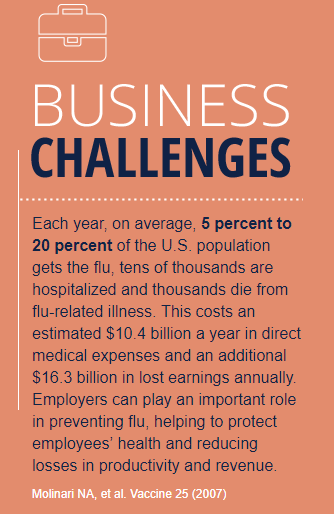 the previous estimate of 250,000 to 500,000. The estimates were drawn from a collaborative multinational survey conducted by the CDC and its global health partners.
the previous estimate of 250,000 to 500,000. The estimates were drawn from a collaborative multinational survey conducted by the CDC and its global health partners.